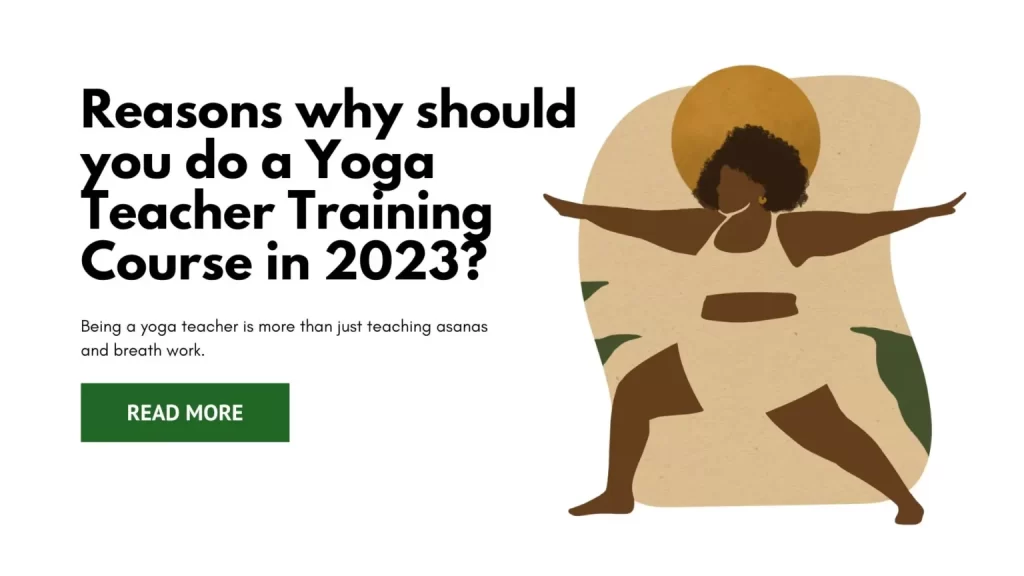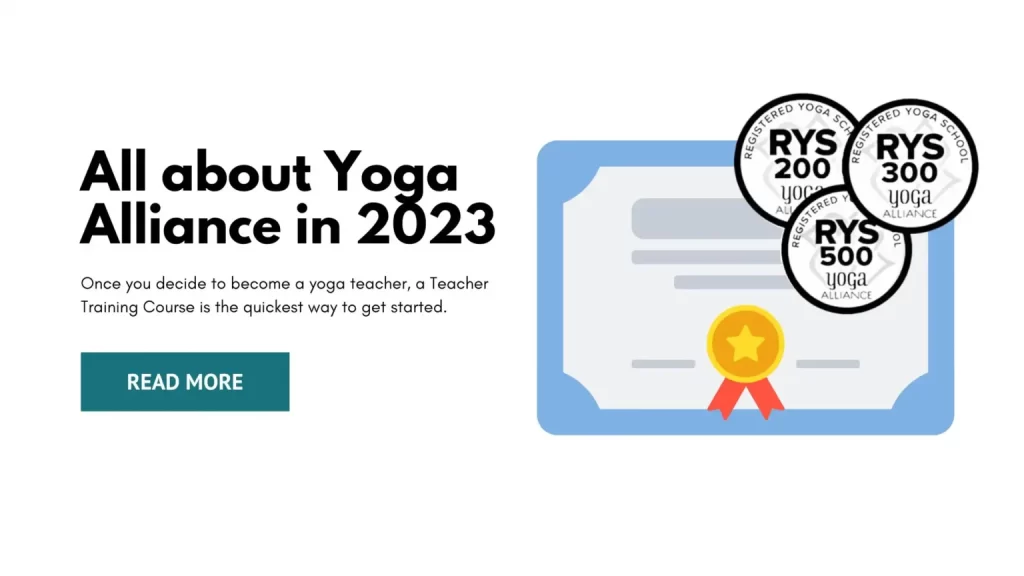Introduction to Yoga Teaching
Yoga teaching is a deeply fulfilling path that combines physical practice with mental wellness. As a yoga instructor, you guide students through their journey to better health, fostering a supportive and nurturing environment. Your role extends beyond physical instruction; you become a mentor, a guide, and an inspiration to your students.
What Does a Yoga Teacher Do?
A yoga teacher’s responsibilities encompass a wide range of tasks:
- Planning Classes: Developing structured sessions to accommodate various skill levels and goals. This involves creating lesson plans, sequencing postures effectively, and incorporating themes that resonate with students.
- Demonstrating Postures: Showing correct form and offering modifications to ensure all students can participate safely and effectively. This includes explaining the benefits of each posture and providing visual demonstrations.
- Providing Adjustments: Using verbal and physical cues to enhance students’ practice. Adjustments help students achieve proper alignment, prevent injuries, and deepen their experience of each posture.
- Creating a Welcoming Space: Ensuring a safe, inclusive environment for all participants. This involves setting the tone for the class, fostering a sense of community, and being mindful of each student’s unique needs.
Why Become a Certified Yoga Instructor?
Becoming a certified yoga instructor offers numerous benefits:
- Deepen Your Practice: Gain a profound understanding of yoga’s physical and philosophical aspects. Through rigorous training, you’ll explore advanced techniques, detailed anatomy, and the rich history and philosophy of yoga.
- Expand Career Opportunities: Certification opens doors to teaching positions in studios, gyms, community centers, and even private settings. It enhances your credibility and can lead to opportunities such as retreats, workshops, and online classes.
- Empower Others: Share your passion and help others achieve holistic well-being. Teaching yoga allows you to positively impact your students’ lives, guiding them toward physical health, mental clarity, and emotional balance.
- Professional Development: Learn to teach safely and effectively, making a lasting impact on your students. Certification programs equip you with teaching methodologies, communication skills, and the confidence to lead diverse groups.
How to Get Started?
Starting your journey to become a yoga instructor involves several key steps:
- Develop Personal Practice: Build a strong personal yoga practice to understand its benefits and challenges. Regular practice helps you internalize the principles of yoga and prepares you to guide others.
- Select a Certification Program: Choose a yoga teacher training (YTT) program that aligns with your goals and lifestyle. Research different schools, their curriculum, and their teaching philosophy to find the best fit.
- Complete Training Hours: Engage in a structured program, typically 200 hours, covering anatomy, philosophy, teaching methodology, and hands-on practice. This comprehensive training provides the foundation you need to teach confidently.
- Gain Teaching Experience: Start teaching classes, even informally, to build confidence and refine your skills. Practical experience is invaluable in developing your unique teaching style and understanding how to manage a classroom.
- Pursue Advanced Training: Consider advanced courses (e.g., 300-hour programs) and specialty certifications to broaden your expertise. Advanced training delves deeper into specific areas of interest, such as therapeutic yoga, advanced anatomy, or yoga for special populations.
What Are the Certification Requirements?
To become a certified yoga instructor, you typically need to:
- Complete a YTT Program: A 200-hour training program is the standard requirement, which includes comprehensive study of yoga postures, anatomy, philosophy, and teaching methods. This foundational training equips you with the knowledge and skills necessary to teach effectively.
- Register with Yoga Alliance: After completing your training, register with Yoga Alliance to gain recognition as a Registered Yoga Teacher (RYT 200). This accreditation enhances your credibility and demonstrates your commitment to professional standards.
- Continue Education: Advanced training (e.g., 300-hour programs) and specialty certifications help you stay current and expand your teaching capabilities. Ongoing education allows you to deepen your expertise, explore new teaching methodologies, and stay updated with the latest developments in the field of yoga.
What Should You Look for in a Yoga Teacher Training Program?
Choosing the right YTT program is crucial for your development. Consider these factors:
- Accreditation: Ensure the program is accredited by a recognized body like Yoga Alliance. Accreditation guarantees that the program meets established standards of quality and comprehensiveness.
- Curriculum: Look for a well-rounded curriculum covering essential topics such as anatomy, philosophy, and teaching methods. A diverse curriculum ensures you receive a holistic education, preparing you to teach various styles and populations.
- Experienced Instructors: Learn from seasoned instructors with extensive teaching experience. Instructors should have a deep understanding of yoga and a passion for teaching, providing you with valuable insights and mentorship.
- Supportive Community: Choose a program that fosters a supportive and inclusive learning environment. A positive community enhances your learning experience, offering encouragement, feedback, and a sense of belonging.
- Flexibility: Find programs that offer flexible schedules to accommodate your other commitments. Consider whether the program offers part-time, intensive, or online options to fit your lifestyle
From Beginner to Pro: Yoga Teacher Training Programs
We offer comprehensive yoga teacher training programs tailored to different levels of experience:
- 100 Hours Yoga Teacher Training Course: Ideal for deepening your practice or starting your teaching journey. This course covers foundational yoga postures, basic anatomy, and introductory teaching techniques. It’s perfect for those looking to enhance their personal practice or take the first step toward becoming a yoga instructor.
- 200 Hours Yoga Teacher Training Course: The standard certification for aspiring instructors. This in-depth program includes thorough study of yoga postures, anatomy, philosophy, and teaching methodology. Graduates are eligible to register with Yoga Alliance as a Registered Yoga Teacher (RYT 200), providing a solid foundation for a teaching career.
- 300 Hours Yoga Teacher Training Course: For those who have completed a 200-hour course and want to advance their skills. This training covers specialized topics, advanced postures, and deeper exploration of yoga philosophy and teaching techniques. It’s designed to elevate your teaching practice and expand your expertise.
Examples to Illustrate the Training Journey
Example 1: Emma, a healthcare professional, started with the 100-hour course to manage stress and enhance her personal practice. Inspired by the transformative experience, she pursued the 200-hour course, gaining the skills and confidence to teach. Today, Emma teaches yoga part-time at her local studio, balancing her healthcare career with her passion for yoga.
Example 2: Jake, a fitness enthusiast, completed the 200-hour course to add yoga to his personal training services. The comprehensive training equipped him with the knowledge to integrate yoga into his fitness programs, offering clients a holistic approach to wellness. Motivated by the positive feedback, Jake enrolled in the 300-hour course to specialize in therapeutic yoga for athletes, further enhancing his professional portfolio.
Table of Yoga Teacher Training Programs
| Program | Duration | Key Features |
| 100 Hours Yoga Teacher Training | 2 weeks | Foundation in yoga postures, basic anatomy, introductory teaching |
| 200 Hours Yoga Teacher Training | 4 weeks | Comprehensive curriculum, Yoga Alliance certification eligibility |
| 300 Hours Yoga Teacher Training | 6 weeks | Advanced techniques, specialized topics, in-depth philosophy |
Conclusion
Embarking on a career in yoga teaching is a transformative journey. Becoming a certified yoga instructor allows you to deepen your practice, help others achieve holistic wellness, and build a fulfilling career. Choose the right training program, meet the certification requirements, and start your journey with our comprehensive yoga teacher training courses.
Take the first step today and become part of the vibrant yoga community. By investing in your education and professional development, you not only enhance your own life but also make a positive impact on the lives of others. Start your journey now and embrace the rewarding path of yoga teaching.


